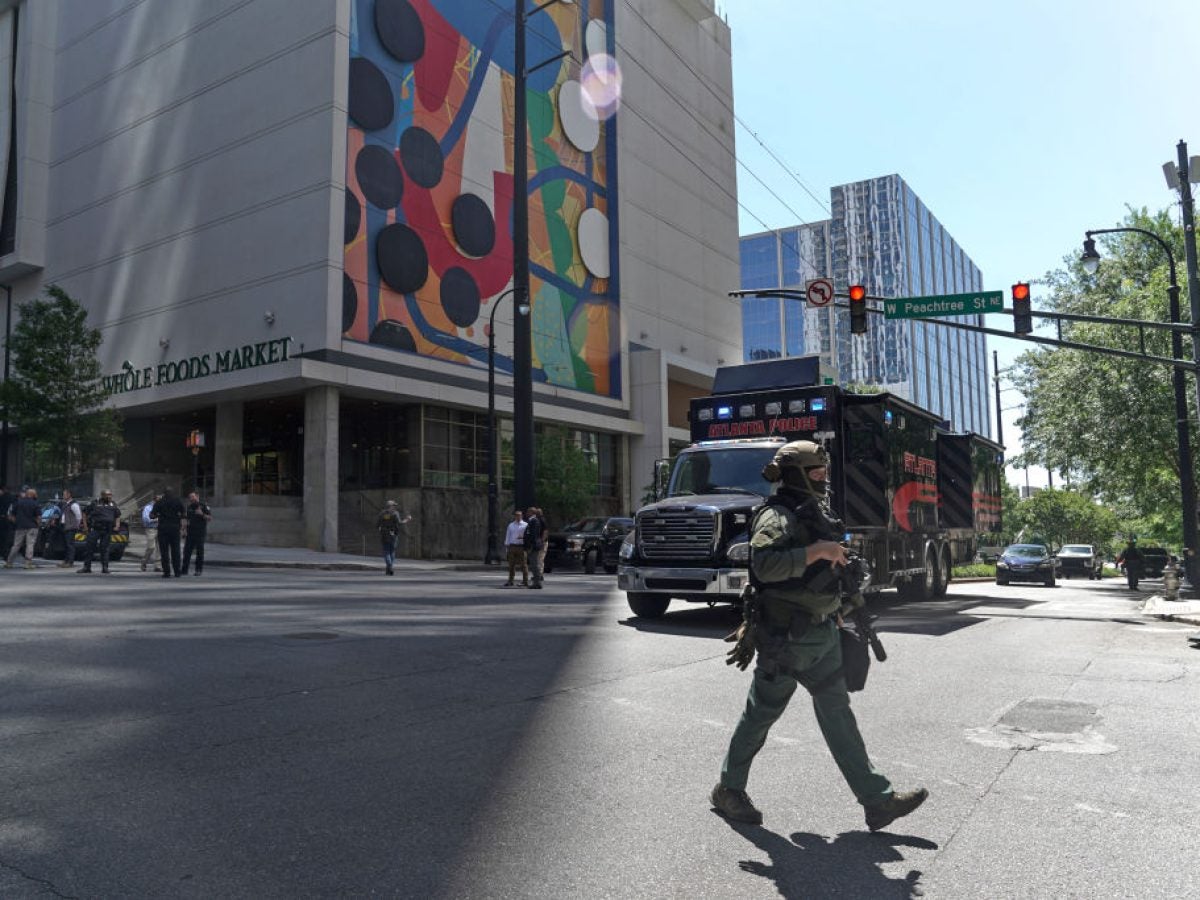
Everyone wants to live in a society free from crime, Black people included. We’re just not usually able to comfortably express that without America treating it as an endorsement of our own criminalization and mass incarceration.
When mention is made of the Black community’s collective concern about crime, it is rarely to address our material needs or alleviate the causes of crime, but instead offered to dismiss calls for progressive reform in lieu of continuing to invest in “tough on crime” initiatives.
There is a concerted effort across all American media to scare us into believing that crime is out of control because America has a financial investment in our fear. Take for example, the mass media reporting that a shoplifting crime surge across the country was responsible for store closings, only for Walgreens CEO to eventually admit “Maybe we cried too much last year,” when data did not support their claims.
And as gun violence and mass shootings have hit America hard, reforms to remove illegal guns from the streets have shown to be a viable solution; funding cops on every corner has not been.
Women too frequently become victims of crime by their intimate partners. But as Everytown for Gun Safety cited, state laws requiring abusers “to surrender their guns were associated with a 14 percent reduction in firearm-related intimate partner homicide and almost a 10 percent drop in overall intimate partner homicide.”
Just as slavery was a business, so too is mass incarceration, and America earns over $11 billion yearly in goods produced by incarcerated people for almost no income. Our fear equals more prisons, and that’s why ‘copaganda’ permeates every corner of American media.
That fearmongering is especially amplified in big cities where thinly veiled dog whistles are used to encourage white residents to bemoan fear of crime waves that aren’t happening by blaming Democrats and “soft on crime” policies, despite the fact that big cities are far safer than rural areas, that people are three times more likely to die from external causes in rural areas than America’s largest city, and murder rates are much higher in red states than blue states.
New York City is a posterchild for this kind of fearmongering. Despite spending more money on policing than some countries spend on their militaries, NYC is frequently cited as an example of the major crime problem brought about by liberals not investing in police and prisons. This couldn’t be further from the truth.
NYC’s Mayor Eric Adams is a former police officer, and there are approximately 36,000 police officers in the NYPD. Rikers—a pre-trial detention center where 19 people died last year awaiting trial—has a $860 million yearly budget. NYPD receives approximately $10.8 billion yearly (not including the additional over $820 million they’re on track to receive in overtime)—a figure that continues to rise despite budget cuts to things like education, libraries, and parks.
We are inundated with news about how the police having been defunded. This is false nationwide. Police funding has actually increased in many US cities like NYC, where Mayor Adams increased NYPD’s budget and gave officers pay raises. We are being told that NYC is the most dangerous it’s ever been, that we’ve returned to the 1990s because bail reform has caused a crime wave. None of this is true. There is no crime wave.
NYC is the safest big city in the country. While NYC, along with the rest of the nation, did experience a rise in homicides during the height of the pandemic in 2020, it’s worth noting even with that rise, the city’s homicide rates were still less than a fifth of what they were in 1990 and the largest increase in murders in 2020 were actually in Republican-led states and cities and that continues to be true present day. Further, NYC’s homicide rate has already dropped to what it was pre-pandemic, and continues to decline, just as it’s been declining since the 1990s .
Second, bail reform is NOT linked to any rise in crime—a fact that the statistics have repeatedly asserted. NYGovernor Kathy Hochul explicitly emphasized this point in an op-ed noting that bail reform has successfully overhauled a cash bail system, the latter of which uses race and money to incarcerate people who have not had a trial or been convicted of a crime whatsoever. The reform saved taxpayer dollars ($658 million annually).
While there has been an increase in shootings and homicides since the law’s passing, Hochul addressed this saying:
the data does not suggest that bail reform is the main cause. In New York City, the percentage of people who are arraigned and released for gun crimes who go on to be rearrested has barely changed since bail reform took effect, from 25% before bail reform to 27%, according to an analysis from the New York State Division of Criminal Justice Services. Outside of New York City, that percentage went from 20% to 22%.
Similarly, the percentage of shooting arrests in New York City where the defendant had an open felony charge has hovered around 25% for years, though it crept up from 24% in 2019 to 28% in 2021, according to NYPD data.
Blaming bail reform for the increase in violence that cities across America are facing isn’t fair and isn’t supported by the data.
Despite this, Hochul recently admitted to rolling back bail reform, not because it’s linked to a rise in crime but because she wants to avoid sensational newspaper headlines that will say it is.
As infuriating as this is– because this decision will cost thousands of Black and brown New Yorkers their freedom and possibly their lives– Hochul is right to believe that perception becomes reality when the media drives the narratives about crime. People feel unsafe and feel that crime is out of control—no matter how divorced those fears are from reality.
Mayor Adams is expressly aware of the ability to scare people into dismissing the facts. He said “being safe is also feeling safe. No one wants to hear stats when they don’t feel safe.” And he’s right. People don’t care that 80% of all arrests nationwide in America are for misdemeanors, traffic offenses, and other non-violent crimes if they’re being disproportionately inundated with wall-to-wall media coverage of the most sensationalized and horrific violent crimes.







America perpetuates this myth that the only people who care about crime are those who support more policing, prisons, and mass incarceration. This accusation is levied against liberals, progressives, abolitionists and anyone who even suggests that instead of continuing to invest more money into policing , we shift resources to our most under resourced and vulnerable communities whose wellbeing we’ve never invested in. Instead of investing more money into incarceration we redirect that money into the infrastructure of those communities to meet their material needs like housing, healthcare, better school systems, mental health resources, and thus, significantly help alleviate the causes of crime and violence.
Of course, Black people care about crime. Of course, we want to rid our communities of the violence and social ills brought about by generations of poverty achieved through systemic racism, criminalization, and disenfranchisement. Recognizing that doesn’t mean America is allowed to scare us into supporting mass incarceration by manufacturing crime waves. Nor does it mean we must consent to being painted as especially criminal, as the culprits responsible for the majority of crime when we are not, or to investing in our criminalization instead of in our communities.
Olayemi Olurin is a movement lawyer, political commentator, writer, and abolitionist thinker. She’s a prominent voice in the movement to decarcerate and close Rikers, an infamous pre-trial detention center in NYC.







